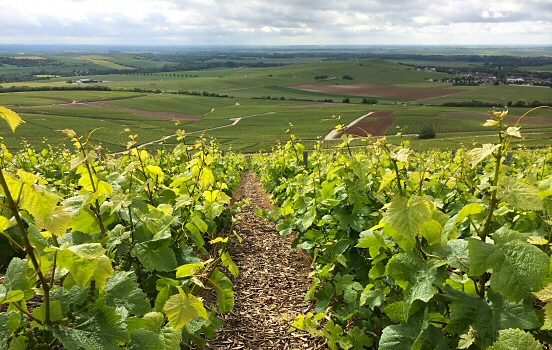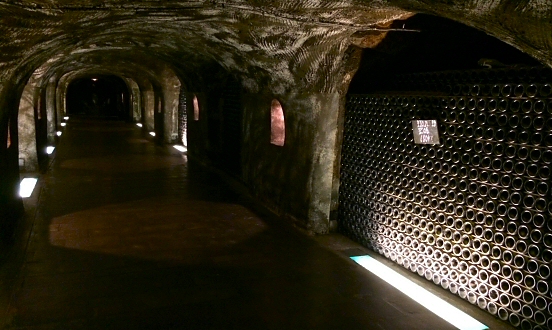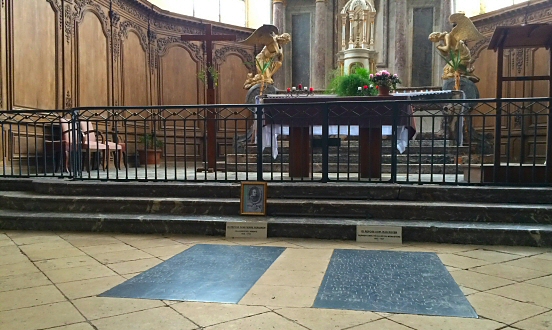While taking a trip to the Champagne region in northern France, bubbles are on everybody’s mind. We visited several of the houses and it was interesting to compare the giants to smaller vendors.
 Chardonnay grapes at Mutigny.
Chardonnay grapes at Mutigny.
Moët & Chandon has a large building complex in Epernay, but the most impressive feature is their underground wine cellars, spanning 28 km of tunnels.
 The endless wine cellars below Moët & Chandon.
The endless wine cellars below Moët & Chandon.
We roamed the damp and chilly underground pathways and stumbled upon a large barrel delivered by Napoleon himself to his good friend Moët in 1810.
 The barrel from Napoleon.
The barrel from Napoleon.
Even though Moët & Chandon is a well-known brand across the world, I was happy to discover that there were serious contenders in the area. The much smaller family estate of P.M. Roger & Fils in the charming village of Ay was up for the challenge, where the cellar master turned out to be a charismatic fellow.
 Dom Pérignon himself, probably best known as the trademark by Moët & Chandon.
Dom Pérignon himself, probably best known as the trademark by Moët & Chandon.
Dom Pérignon was the cellar master at the Benedictine Abbey and one of the key figures behind the development of the double-fermentation process.
 The tomb of Dom Pérignon (left).
The tomb of Dom Pérignon (left).
Today the monk is more well-known for the trademark by Moët & Chandon, used for a high-end Champagne in his name. He died in 1715 and we visited his tomb in the abbey of Hautvillers, a town which proclaims itself as “the cradle of Champagne”.
Comments
No comments yet.
Leave a reply